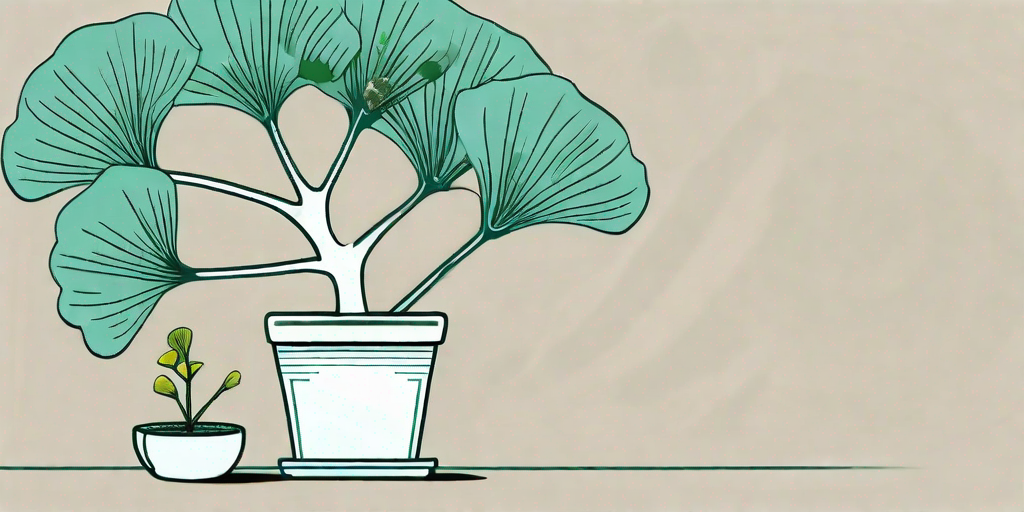
Welcome to the world of Ginkgo Biloba, the living fossil that has been around for over 270 million years. If you're looking to add a touch of prehistoric charm to your garden, you've come to the right place. Let's dive into the exciting journey of germinating your own Ginkgo seeds.
The Ginkgo Biloba Tree: A Brief Introduction
Before we get our hands dirty, let's take a moment to appreciate the Ginkgo Biloba tree. This ancient species, also known as the maidenhair tree, is the only surviving member of the Ginkgoaceae family. It's a hardy tree that can withstand urban pollution and pests, making it a popular choice for city landscaping.
But it's not just a pretty face. The Ginkgo Biloba tree has a rich history in traditional medicine, particularly in China, where it's been used for thousands of years. The leaves are believed to improve memory and concentration, while the seeds are used to treat asthma and coughs.
Getting Started with Ginkgo Seeds
Where to Find Ginkgo Seeds
First things first, you need to get your hands on some Ginkgo seeds. You can find them online, at a local nursery, or even in the wild if you're lucky enough to live near a mature Ginkgo tree. Just remember, the seeds are covered in a fleshy fruit that can be quite smelly, so you might want to bring a pair of gloves.
Once you've got your seeds, it's time to get them ready for germination. This involves a process called stratification, which we'll cover in the next section.
Stratifying Your Ginkgo Seeds
Stratification is a fancy term for tricking your seeds into thinking they've been through a winter. This is done by placing them in a cold and moist environment for a few weeks. Here's a step-by-step guide:
- Remove the fleshy fruit from the seeds. This can be done by soaking them in water for a few days and then scrubbing off the pulp.
- Place the seeds in a bag of moist sand or peat moss.
- Store the bag in the fridge for 1-3 months.
- Check the bag regularly to make sure it's still moist and that no mould is forming.
After stratification, your seeds are ready to be planted. But before we get to that, let's talk about the ideal conditions for growing a Ginkgo tree.
Creating the Perfect Environment for Your Ginkgo Tree
Ginkgo trees are pretty tough, but they do have some preferences when it comes to their environment. They like full sun and well-drained soil. They can tolerate a range of soil types, including clay, sand, and loam, as long as it's not waterlogged.
When it comes to temperature, Ginkgo trees can handle the cold. They're hardy to USDA zone 4, which means they can survive temperatures as low as -30 degrees Fahrenheit. However, they also do well in warmer climates.
Planting and Caring for Your Ginkgo Tree
Planting Your Ginkgo Seeds
Now that your seeds are stratified and you've prepared the perfect spot, it's time to plant. Simply place the seed in a pot of well-draining soil, about 1 inch deep. Water it well and place it in a sunny spot.
Patience is key here. Ginkgo seeds can take anywhere from 1 to 6 months to germinate. But once they do, you'll have your very own Ginkgo sapling.
Caring for Your Ginkgo Tree
Ginkgo trees are low-maintenance, but they do need some care. Water them regularly, especially during dry periods. They also benefit from a layer of mulch around their base to help retain moisture.
As your tree grows, it may need some pruning to maintain its shape. This is best done in late winter or early spring when the tree is dormant.
FAQs
Is it better to grow Ginkgo from seeds or cuttings?
Both methods can be successful, but growing from seeds is often more rewarding. It can take longer, but there's something special about nurturing a tree from seed to maturity.
How long does it take for a Ginkgo tree to bear fruit?
Ginkgo trees are slow growers. It can take anywhere from 20 to 50 years for a tree to start producing fruit. So if you're in it for the long haul, growing a Ginkgo tree can be a rewarding experience.
Are Ginkgo trees messy?
They can be. The female trees produce fruit that has a strong, unpleasant smell when it falls and starts to decay. However, many nurseries sell male trees, which don't produce fruit.
Conclusion
And there you have it, a comprehensive guide to germinating Ginkgo seeds. It might seem like a daunting task, but with a bit of patience and care, you'll be rewarded with a beautiful, resilient tree that's a living piece of history. So why not give it a go? After all, if a Ginkgo tree can survive for millions of years, surely we can handle a bit of gardening.
Happy planting!















